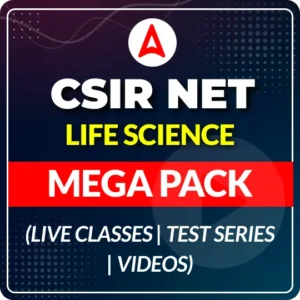Table of Contents
Natural resources are those that are present (on the earth) but are not influenced by human activity. These are the resources that are created naturally from materials found in the environment. Natural resources include things like air, water, sunlight, soil, rock, plants, animals, and fossil fuels. In the following article, the candidates will find all detailed information on Natural Resources.
What are Natural Resources?
Natural resources are substances derived from the earth, substances such as food, construction and clothing materials, fertilizers, metals, water, and geothermal energy. Natural resources are substances that occur naturally and are beneficial to man or may be useful under possible technological, economic, or social circumstances. Natural resources have always been the domain of the natural sciences.
Types of Natural Resources
There are two categories of natural resources, depending on their availability:
- Renewable resources are those that are perpetually available and can be utilized in a variety of ways. Examples include a forest, wind, and water.
- Non-renewable resources are those whose supply is finite owing to their non-renewable nature and whose availability might diminish in the future. Minerals and fossil fuels are a few examples of the same.
Differences Between Renewable & Non-Renewable Resources
There are a few characteristics that help differentiate between renewable resources and non-renewable resources. The same has been tabulated below.
| Differences between Renewable & Non-renewable Resources | |
| Renewable Resources | Non-Renewable Resources |
| It can be renewed as it is available in infinite quantity | Once completely consumed, it cannot be renewed due to limited stock |
| Sustainable in nature | Exhaustible in nature |
| Low-cost and environment-friendly | High cost and less environment-friendly |
| Replenish quickly | Replenish slowly or do not replenish naturally at all |
Types of Renewable & Non-renewable Resources
Here are the different Types of Renewable and Non-Renewable Resources. These are just a few examples within each category. It’s important to note that the availability and utilization of these resources can vary by region and technological advancements throughout the world.
Types of Renewable Resources
- Solar Energy: Harvested from the sun’s rays using solar panels to generate electricity or heat.
- Wind Energy: Captured by wind turbines to produce electricity.
- Hydroelectric Power: Generated from flowing water, typically in dams or rivers.
- Biomass: Organic materials like wood, crops, and waste are used for energy production.
- Geothermal Energy: Utilizes heat from the Earth’s interior for electricity and heating.
- Tidal Energy: Generated by the gravitational forces of the moon and sun on ocean tides.
Types of Non-Renewable Resources
- Fossil Fuels: Fossil fuel is a non-renewable energy source formed from ancient organic matter, including coal, oil, and natural gas, primarily used for energy production.
- Coal is Mined and burned for electricity and industrial processes.
- Oil (Petroleum) is Extracted and refined into gasoline, diesel, and other fuels.
- Natural Gas is Used for heating, electricity, and as a fuel source.
- Minerals and Metals: Minerals and metals are finite natural substances extracted from the Earth’s crust and used for various industrial purposes, but their supply cannot be readily replenished within a short timeframe.
- Iron Ore is Mined for steel production.
- Copper is used in wiring and electronics.
- Gold, Silver, and Precious Metals are Used in jewellery and electronics.
- Uranium is Used in nuclear energy and weapons.
- Non-Metallic Minerals: Non-metallic minerals are finite natural substances sourced from the Earth’s crust, excluding metals, and are used in various applications, but their availability cannot be quickly replenished.
- Phosphate is Used in fertilizers.
- Gypsum is used in construction materials.
- Salt is used for various industrial processes.
- Diamonds are Used in jewellery and industrial tools.
Important Natural Resources
The four most significant natural resources that make life sustainable. These four crucial natural resources that enable the sustainability of life, without which living organisms would not have thrived on Earth.
- Air: For all plants, animals, and humans to exist on our planet, the air they breathe must be clean. Therefore, action must be taken to lower air pollution.
- Water: Only 2% of the water on Earth, which covers 70% of the planet, is freshwater. It is important to take steps to educate the public and control water use.
- Soil: Different particles and nutrients make up soil. It promotes plant growth.
- Forests: Forests maintain the world’s environment and offer clean air. Trees are taken down for housing and building projects.
Natural Resources – Conservation
Natural resources are vital to human survival, yet not all of them are renewable, making conservation of them extremely crucial. Human activity, notably the use of non-renewable resources like fossil fuels, is to blame for the dramatic increase in climate change. We can influence our natural environment more favourably if we conserve our natural resources. We can save natural resources right here at home by doing things like:
- Using less water – Taking brief showers and turning off the taps when not in use can alleviate water wastage.
- Turning off the lights – During the day or when not required, turn off any electronic device. In addition, LED light bulbs can be used as they consume very less power.
- Walking, using bicycles and sharing vehicles for long distances help in saving fuel.
- Using renewable energy – Using solar panels, wind energy, and hydro energy can essentially reduce our dependence and cut back on resource exhaustion over time.
- Using the three R’s – Reduce, reuse, and recycle.



 UGC NET Answer Key 2025, Download Shift ...
UGC NET Answer Key 2025, Download Shift ...
 Rajasthan PTET Result 2025 Out @ptetvmou...
Rajasthan PTET Result 2025 Out @ptetvmou...
 UGC NET Geography Cut Off 2025, Subject ...
UGC NET Geography Cut Off 2025, Subject ...




